CuInSe2-Based Near-Infrared Photodetector
Abstract
:1. Introduction
2. Materials and Methods
2.1. Fabrication of CISe Thin Film Photodetectors
2.2. Measurement Details
3. Results and Discussion
3.1. CuInSe2 Thin Film with Low Bandgap
3.2. CuInSe2-Based Photodetectors
4. Conclusions
Author Contributions
Funding
Conflicts of Interest
References
- Lee, W.Y.; Ha, S.; Lee, H.; Bae, J.H.; Jang, B.; Kwon, H.J.; Yun, Y.; Lee, S.; Jang, J. High-Detectivity Flexible Near-Infrared Photodetector Based on Chalcogenide Ag2Se Nanoparticles. Adv. Opt. Mater. 2019, 7, 190812. [Google Scholar] [CrossRef]
- Sargent, E.H. Infrared quantum dots. Adv. Mater. 2005, 17, 515–522. [Google Scholar] [CrossRef]
- Liu, Z.; Tao, L.; Zhang, Y.; Zhou, G.; Zhu, H.; Fang, Y.; Wu, G.; Yang, D.; Chen, H. Narrowband Near-Infrared Photodetector Enabled by Dual Functional Internal-Filter-Induced Selective Charge Collection. Adv. Opt. Mater. 2021, 9, 2100288. [Google Scholar] [CrossRef]
- Surdo, S.; Carpignano, F.; Merlo, S.; Barillaro, G. Near-Infrared Silicon Photonic Crystals with High-Order Photonic Bandgaps for High-Sensitivity Chemical Analysis of Water-Ethanol Mixtures. ACS Sens. 2018, 3, 2223–2231. [Google Scholar] [CrossRef]
- Miao, J.; Zhang, F. Recent progress on highly sensitive perovskite photodetectors. J. Mater. Chem. C 2019, 7, 1741–1791. [Google Scholar] [CrossRef]
- Sargent, E.H. Solar cells, photodetectors, and optical sources from infrared colloidal quantum dots. Adv. Mater. 2008, 20, 3958–3964. [Google Scholar] [CrossRef]
- Liu, C.; Guo, J.; Yu, L.; Li, J.; Zhang, M.; Li, H.; Shi, Y.; Dai, D. Silicon/2D-material photodetectors: From near-infrared to mid-infrared. Light Sci. Appl. 2021, 10, 123. [Google Scholar] [CrossRef] [PubMed]
- Huang, Z.; Carey, J.E.; Liu, M.; Guo, X.; Mazur, E.; Campbell, J.C. Microstructured silicon photodetector. Appl. Phys. Lett. 2006, 89, 14–17. [Google Scholar] [CrossRef]
- Son, B.; Lin, Y.; Lee, K.H.; Chen, Q.; Tan, C.S. Dark current analysis of germanium-on-insulator vertical p-i-n photodetectors with varying threading dislocation density. J. Appl. Phys. 2020, 127, 203105. [Google Scholar] [CrossRef]
- Gonzalez, M.B.; Simoen, E.; Eneman, G.; De Jaeger, B.; Wang, G.; Loo, R.; Claeys, C. Defect assessment and leakage control in Ge junctions. Microelectron. Eng. 2014, 125, 33–37. [Google Scholar] [CrossRef]
- Son, B.; Lin, Y.; Lee, K.H.; Wang, Y.; Wu, S.; Tan, C.S. High speed and ultra-low dark current Ge vertical p-i-n photodetectors on an oxygen-annealed Ge-on-insulator platform with GeO x surface passivation. Opt. Express 2020, 28, 23978. [Google Scholar] [CrossRef]
- Lapierre, R.R.; Robson, M.; Azizur-Rahman, K.M.; Kuyanov, P. A review of III-V nanowire infrared photodetectors and sensors. J. Phys. D Appl. Phys. 2017, 50, 123001. [Google Scholar] [CrossRef]
- Verdun, M.; Beaudoin, G.; Portier, B.; Bardou, N.; Dupuis, C.; Sagnes, I.; Haïdar, R.; Pardo, F.; Pelouard, J.L. Dark current investigation in thin P-i-N InGaAs photodiodes for nano-resonators. J. Appl. Phys. 2016, 120, 084501. [Google Scholar] [CrossRef] [Green Version]
- Kim, J.H.; Han, H.; Kim, M.K.; Ahn, J.; Hwang, D.K.; Shin, T.J.; Min, B.K.; Lim, J.A. Solution-processed near-infrared Cu(In,Ga)(S,Se)2 photodetectors with enhanced chalcopyrite crystallization and bandgap grading structure via potassium incorporation. Sci. Rep. 2021, 11, 7820. [Google Scholar] [CrossRef] [PubMed]
- Yuan, Y.; Zhang, L.; Yan, G.; Cen, G.; Liu, Y.; Zeng, L.; Zeng, C.; Zhao, C.; Hong, R.; Mai, W. Significantly Enhanced Detectivity of CIGS Broadband High-Speed Photodetectors by Grain Size Control and ALD-Al2O3 Interfacial-Layer Modification. ACS Appl. Mater. Interfaces 2019, 11, 20157–20166. [Google Scholar] [CrossRef]
- Qiao, S.; Liu, J.; Niu, X.; Liang, B.; Fu, G.; Li, Z.; Wang, S.; Ren, K.; Pan, C. Piezophototronic Effect Enhanced Photoresponse of the Flexible Cu(In,Ga)Se2 (CIGS) Heterojunction Photodetectors. Adv. Funct. Mater. 2018, 28, 1707311. [Google Scholar] [CrossRef]
- Chirilǎ, A.; Buecheler, S.; Pianezzi, F.; Bloesch, P.; Gretener, C.; Uhl, A.R.; Fella, C.; Kranz, L.; Perrenoud, J.; Seyrling, S.; et al. Highly efficient Cu(In,Ga)Se2 solar cells grown on flexible polymer films. Nat. Mater. 2011, 10, 857–861. [Google Scholar] [CrossRef] [PubMed]
- Ramanujam, J.; Singh, U.P. Copper indium gallium selenide based solar cells—A review. Energy Environ. Sci. 2017, 10, 1306–1319. [Google Scholar] [CrossRef]
- Nakamura, M.; Yamaguchi, K.; Kimoto, Y.; Yasaki, Y.; Kato, T.; Sugimoto, H. Cd-Free Cu(In,Ga)(Se,S)2 Thin-Film Solar Cell With Record Efficiency of 23.35 %. IEEE J. Photovolt. 2019, 9, 1863–1867. [Google Scholar] [CrossRef]
- Aldemir, D.A.; Kaleli, M.; Yavru, A.C. Electrical and photoelectric properties of Yb/CIGS thin film Schottky photodiode. Sens. Actuators A Phys. 2020, 311, 112091. [Google Scholar] [CrossRef]
- Zeng, X.; Lontchi, J.; Zhukova, M.; Fourdrinier, L.; Qadir, I.; Ren, Y.; Niemi, E.; Li, G.; Flandre, D. High-responsivity broadband photodetection of an ultra-thin In2S3/CIGS heterojunction on steel. Opt. Lett. 2021, 46, 2288. [Google Scholar] [CrossRef] [PubMed]
- Qiao, S.; Feng, K.; Li, Z.; Fu, G.; Wang, S. Ultrahigh, ultrafast and large response size visible-near-infrared optical position sensitive detectors based on CIGS structures. J. Mater. Chem. C 2017, 5, 4915–4922. [Google Scholar] [CrossRef]
- Gong, J.; Kong, Y.; Li, J.; Wang, K.; Wang, X.; Zhang, Z.; Ding, Z.; Xiao, X. Enhancing photocurrent of Cu(In,Ga)Se2 solar cells with actively controlled Ga grading in the absorber layer. Nano Energy 2019, 62, 205–211. [Google Scholar] [CrossRef]
- Colombara, D.; Werner, F.; Schwarz, T.; Cañero Infante, I.; Fleming, Y.; Valle, N.; Spindler, C.; Vacchieri, E.; Rey, G.; Guennou, M.; et al. Sodium enhances indium-gallium interdiffusion in copper indium gallium diselenide photovoltaic absorbers. Nat. Commun. 2018, 9, 826. [Google Scholar] [CrossRef] [PubMed] [Green Version]
- Kikuchi, K.; Imura, S.; Miyakawa, K.; Ohtake, H.; Kubota, M.; Ohta, E. Photocurrent multiplication in Ga2O3/CuInGaSe2 heterojunction photosensors. Sens. Actuators A Phys. 2015, 224, 24–29. [Google Scholar] [CrossRef]
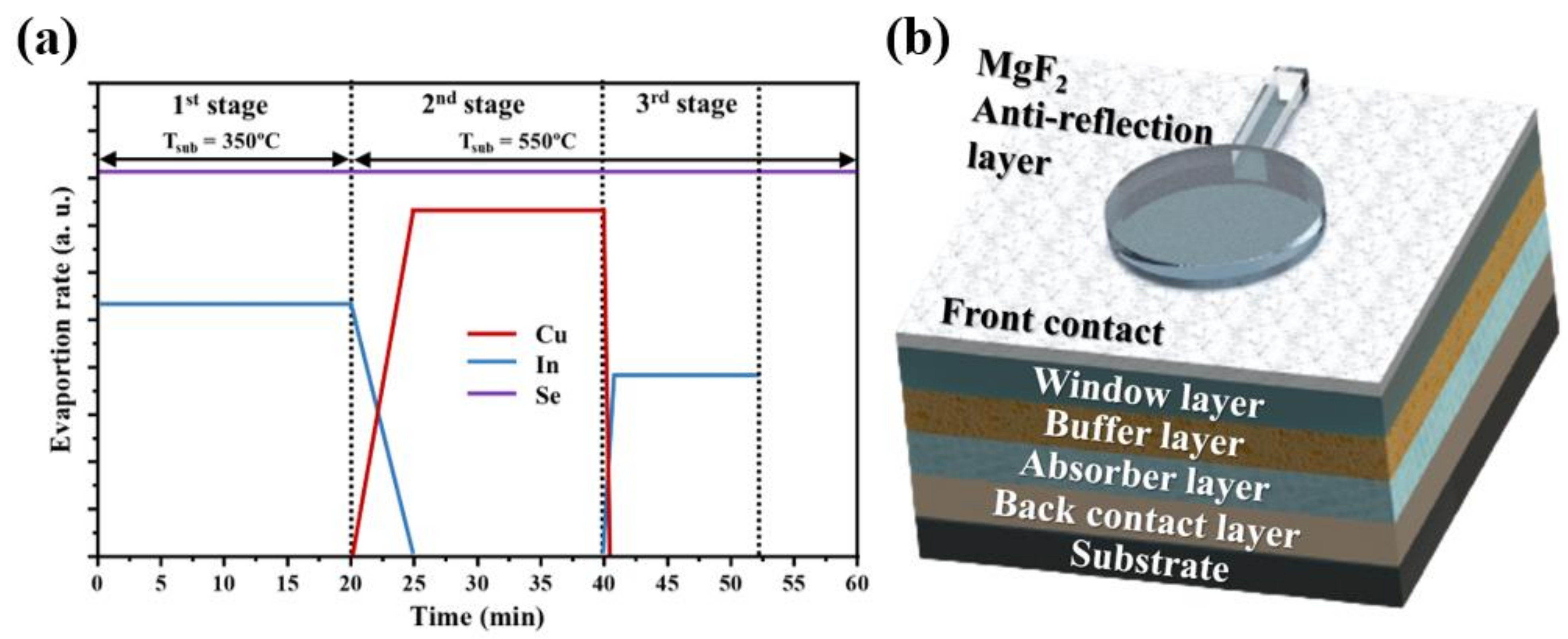
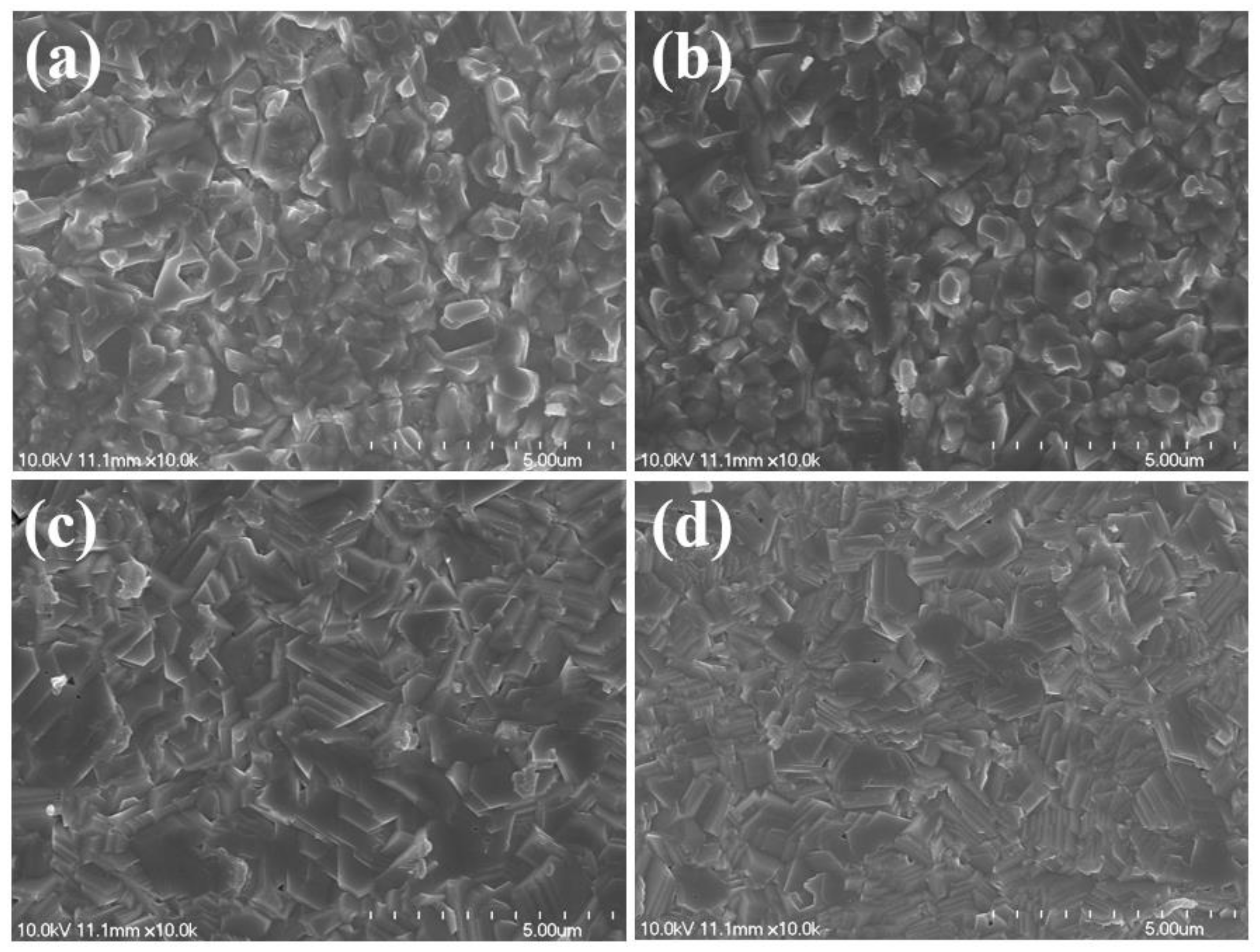
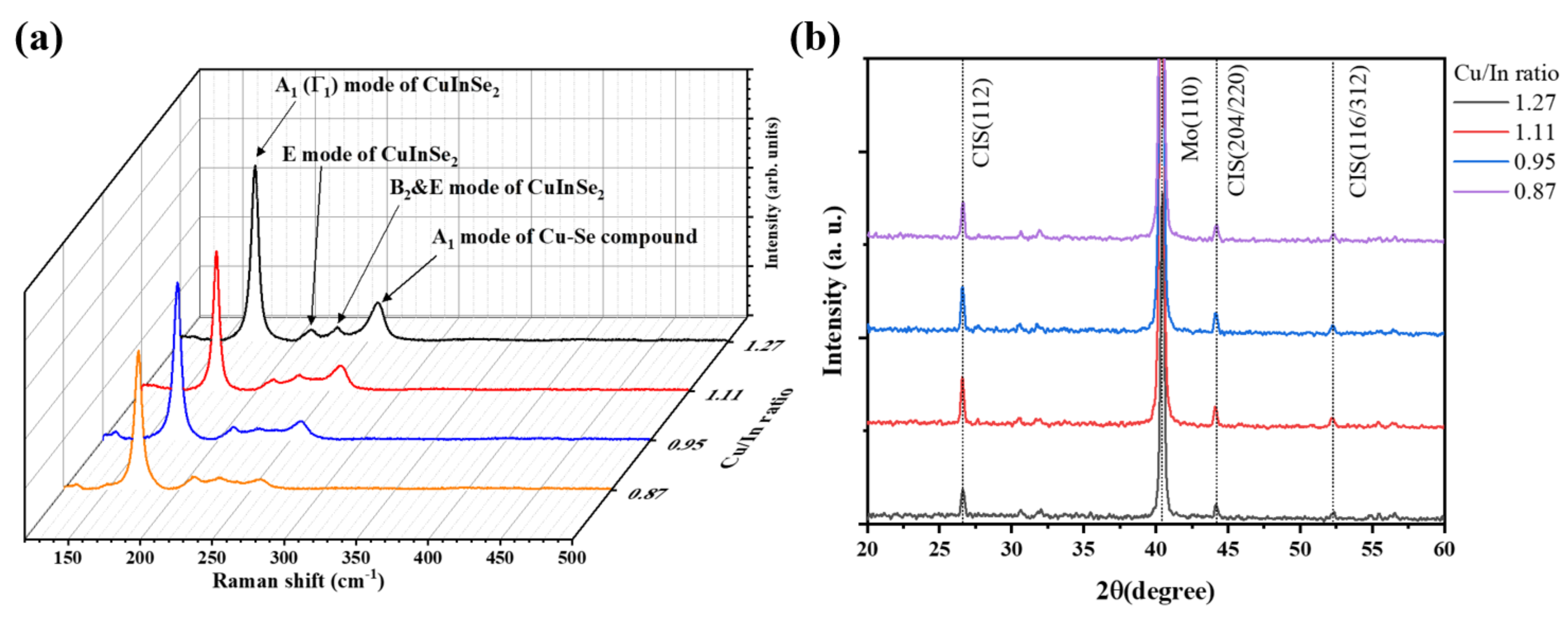
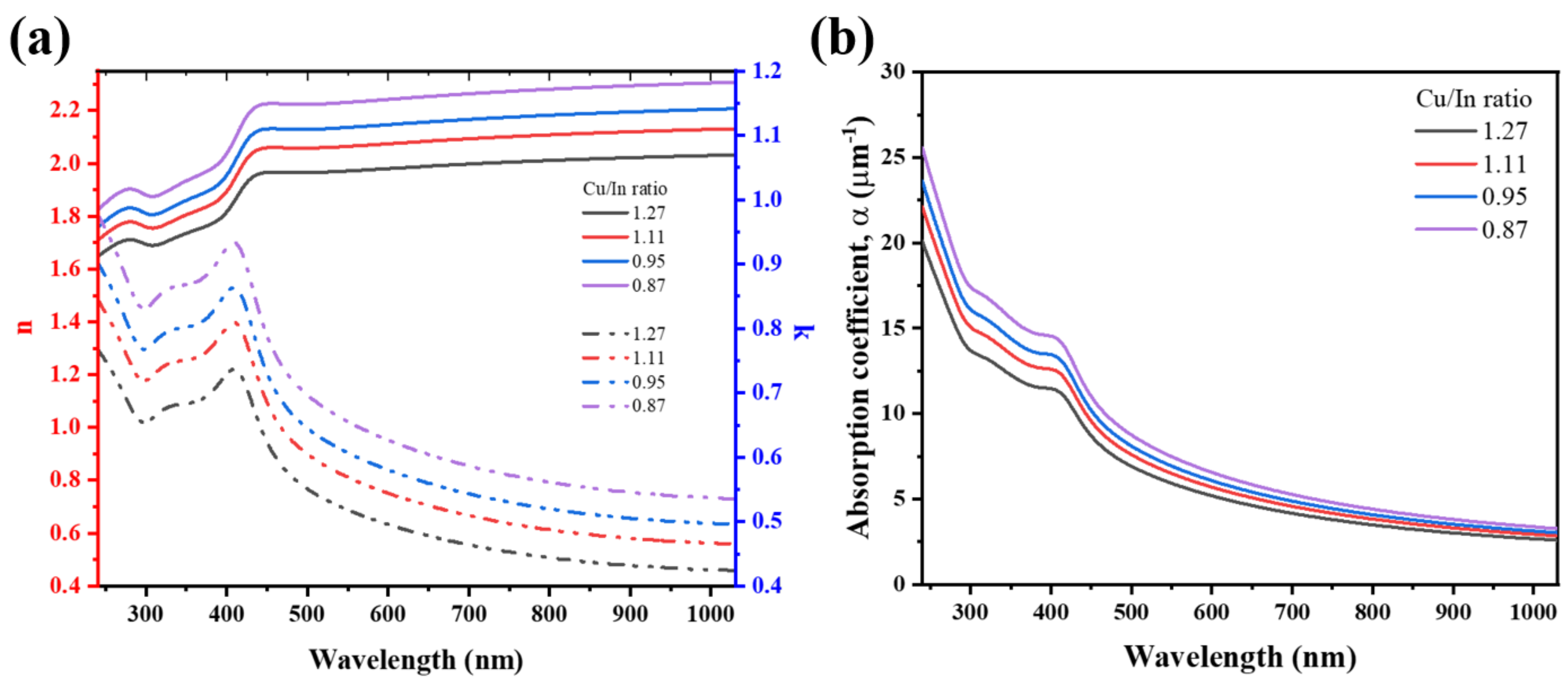
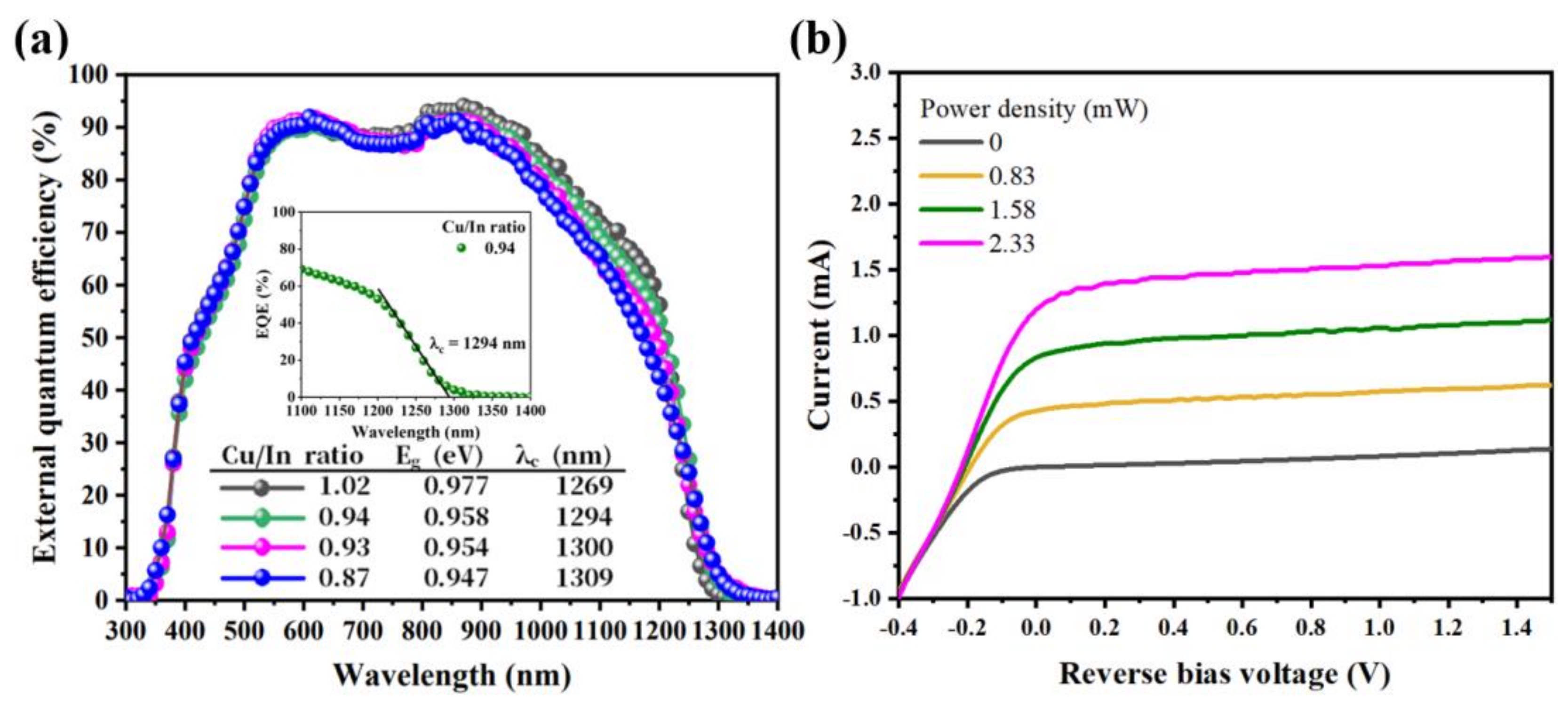
| Device Structure | Dark Current | Responsivity (A/W) | References |
|---|---|---|---|
| Solution-processed CIGS | 0.3 mA/cm2 @ −0.4 V | 0.34 @ 980 nm, 1mW/cm2 | [14] |
| ZnO/CdS/Al2O3/CIGS | 22.2 nA/cm2 @ 0 V | 0.54 @ 880 nm | [15] |
| Ga2O3/CIGS | 1 nA/cm2 @ 0 V | − | [25] |
| CISe | 28.82 mA/cm2 @ −0.4 V | 0.6 @ 1064 nm | This work |
Publisher’s Note: MDPI stays neutral with regard to jurisdictional claims in published maps and institutional affiliations. |
© 2021 by the authors. Licensee MDPI, Basel, Switzerland. This article is an open access article distributed under the terms and conditions of the Creative Commons Attribution (CC BY) license (https://creativecommons.org/licenses/by/4.0/).
Share and Cite
Kim, S.-T.; Yoo, J.-S.; Lee, M.-W.; Jung, J.-W.; Jang, J.-H. CuInSe2-Based Near-Infrared Photodetector. Appl. Sci. 2022, 12, 92. https://doi.org/10.3390/app12010092
Kim S-T, Yoo J-S, Lee M-W, Jung J-W, Jang J-H. CuInSe2-Based Near-Infrared Photodetector. Applied Sciences. 2022; 12(1):92. https://doi.org/10.3390/app12010092
Chicago/Turabian StyleKim, Sung-Tae, Ji-Seon Yoo, Min-Woo Lee, Ji-Won Jung, and Jae-Hyung Jang. 2022. "CuInSe2-Based Near-Infrared Photodetector" Applied Sciences 12, no. 1: 92. https://doi.org/10.3390/app12010092
APA StyleKim, S.-T., Yoo, J.-S., Lee, M.-W., Jung, J.-W., & Jang, J.-H. (2022). CuInSe2-Based Near-Infrared Photodetector. Applied Sciences, 12(1), 92. https://doi.org/10.3390/app12010092






